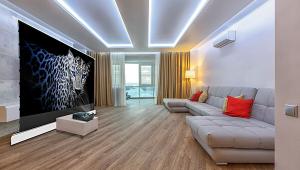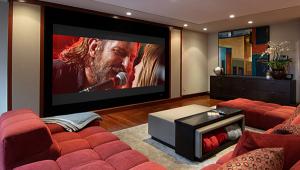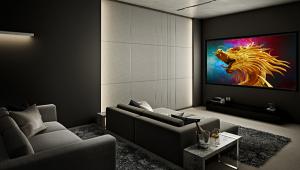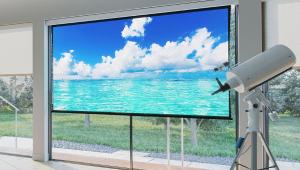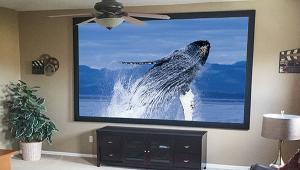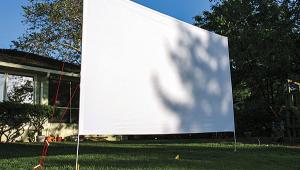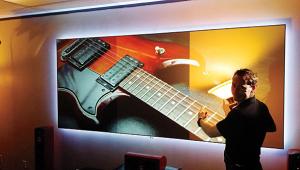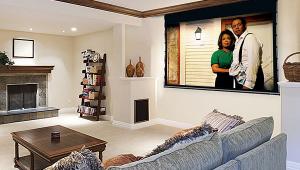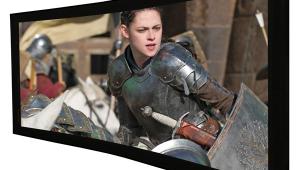Screening Your Room: Stewart Filmscreen StudioTek 100 and StudioTek 130 G3 Too Many Choices?
Choosing a screen mainly involves selecting the appropriate size, gain, and whether to perf or not to perf. But there are other considerations as well. Some screens serve special functions. For example, 3D with polarized glasses will demand a special screen designed to preserve that polarization. Other screens are optimized to reduce the effect of room reflections. There are screens that are specifically designed to work with some room lighting. Other screens are configured to minimize the light that reflects off of room surfaces and back onto the screen—a process that can reduce image contrast even in a completely darkened room. Stewart Filmscreen’s FireHawk G3 is perhaps the best-known example of this type of controlled-reflectivity screen.
You can also choose between fixed screens that mount on a wall or on an optional stand, retractable screens, screens with masking for various aspect ratios, curved screens, super-wide CinemaScope screens, and screens for rear projection. For many of these options, bring more money—sometimes even more than the price of the projector. For example, a 10-foot-wide, 2.35:1, powered masking StudioTek 130, non-perf Stewart CineCurve screen can make for a spectacular home theater setup. But it will also take a $20,000 bite out of your bank account. On the other hand, a do-it-yourself screen paint kit from Goo Systems costs a few hundred bucks. We can’t yet say how goo…d it is, as we haven’t tried it. On the third hand, a white wall can work as a free stopgap, but it makes for a poor screen.
Note: The Where to Buy link below is an affiliate link. If you purchase through the link, we may earn a small commission at no extra cost to you. Thank you for your support!
- Log in or register to post comments
